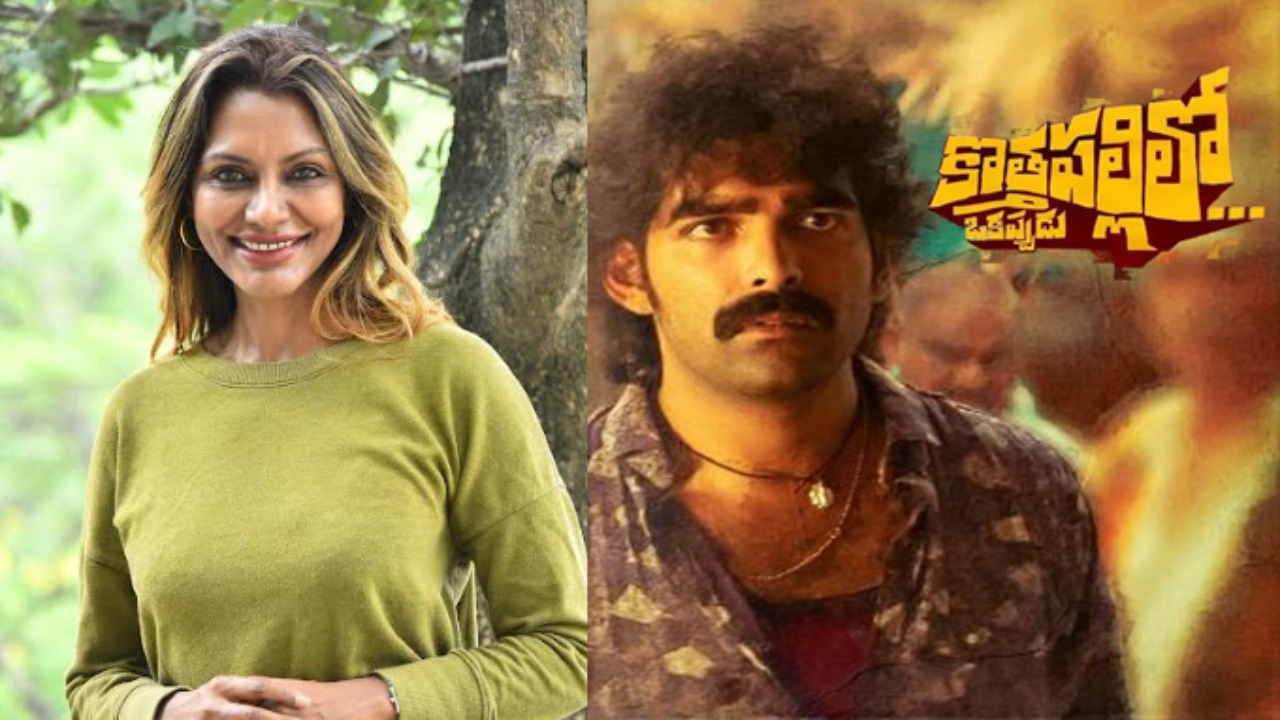Kothapallilo Okappudu review: When a producer like Praveena Paruchuri, known for the acclaimed C/o Kancharapalem, steps into the director’s seat, expectations are naturally high. With Kothapallilo Okappudu, she attempts a bold narrative set in the 1990s, blending themes of faith, class, superstition, and gender politics in a village backdrop. Sadly, the ambition doesn’t translate into effective storytelling.
The Plot
The story is set in the tribal hamlet of Kothapalli near Paderu, the story unfolds in 1997 and follows Ramakrishna (Manoj Chandra), a carefree man working under a ruthless moneylender, Appanna (Ravindra Vijay). Ramakrishna is romantically involved with Savitri (Monika T), a wealthy village girl. As the film progresses, two critical events occur—one shakes Ramakrishna’s world, while the other fuels the film’s exploration of blind belief and manipulation. However, instead of a gripping village drama, we get a scattered narrative that struggles to commit to its themes.
Performances
The saving grace of Kothapallilo Okappudu lies in its performances. Manoj Chandra, a newcomer, delivers a refreshingly grounded portrayal of Ramakrishna. He’s convincing, unaffected, and fits into the rustic setting with ease. Usha Bonela is lovely as Aadhi Lakshmi. She brings a quiet emotional touch to her scenes and feels effortlessly real on screen. There’s a natural elegance to her, and she dances beautifully too.
Ravindra Vijay is given a juicy role as the scheming financier Appanna. Though his screen time is uneven, his performance leaves a strong impression—whether he’s being sly, comic, or menacing. However, the exaggerated comedic touch in certain scenes weakens his impact, especially when the film’s tone shifts abruptly.
Supporting roles by Banerjee and Premsagar add weight to the story, but their arcs are definitely underutilised.
What Works
Solid core idea: The film’s intent—to question how myths are created and how faith often emerges from convenience—is genuinely intriguing.
Natural performances: Several key actors deliver believable portrayals that anchor the narrative, even when the writing falters.
A few strong moments in the second half: There are brief glimpses where the story effectively critiques how people embrace “miracles” when it suits them.
Where It Falters
Inconsistent Writing & Structure
The biggest letdown is the screenplay. The narrative is disjointed, especially in the first half, with scenes that drag or seem inserted purely for humour or nostalgia. The pacing is sluggish, and the transition from light-hearted village life to a more serious social critique lacks rhythm. The unfinished arcs. The ideas are introduced but never fully developed—they begin and end in the same place. While the story touches on several social issues, it fails to carry them through with meaningful transitions.
Outdated Tropes
The film depends heavily on clichés—recording dances, comic relief characters, and even references to retro Tollywood icons like Chiranjeevi and Vijayashanti. These elements feel more like distractions than meaningful parts of the plot.
Missed Opportunity on Gender Commentary
The film makes a half-hearted attempt to address how women are perceived in terms of fairness and beauty. But it never fully challenges the problematic norms—it wavers between critique and repetition. In the end, it appears to reinforce what it set out to question.
Poorly Developed Characters
The central love interest Savitri is barely fleshed out, and her presence in the story feels ornamental. Ramakrishna’s transformation post-tragedy lacks emotional build-up, and some character arcs, like Appanna’s, fizzle out too early. The sudden shift of the characterisations, without proper reasons or explanations/realisation relation scenes.
Climactic Confusion
Instead of delivering a thought-provoking conclusion, the film opts for a feel-good twist that undermines its earlier commentary on blind faith. The tonal shift is jarring and leaves the viewer more puzzled than satisfied.
Technical Aspects
Cinematography by Petros Antoniadis captures the rural landscape well, though the visual storytelling could’ve been more imaginative.
Editing by Kiran R is patchy, especially in the first half, where pacing issues are noticeable.
Music by Mani Sharma and Varun Unni is passable but fails to elevate the narrative.
Kothapallilo Okappudu review: Verdict
Kothapallilo Okappudu sets out to tell a meaningful story but gets lost in its own clutter. With underdeveloped characters, tonal inconsistency, and a muddled message, it ends up as a film full of potential but lacking in clarity and conviction. The village backdrop and 90s setting feel more like a cost-saving choice than an artistic one, and the attempt at social commentary remains surface-level.
Despite being a film made by a woman, it doesn’t break new ground in tone, narrative, or treatment—and ultimately, it feels like a missed chance to present something powerful and original.
Fridaywall Rating: ★★☆☆☆ (2/5)











